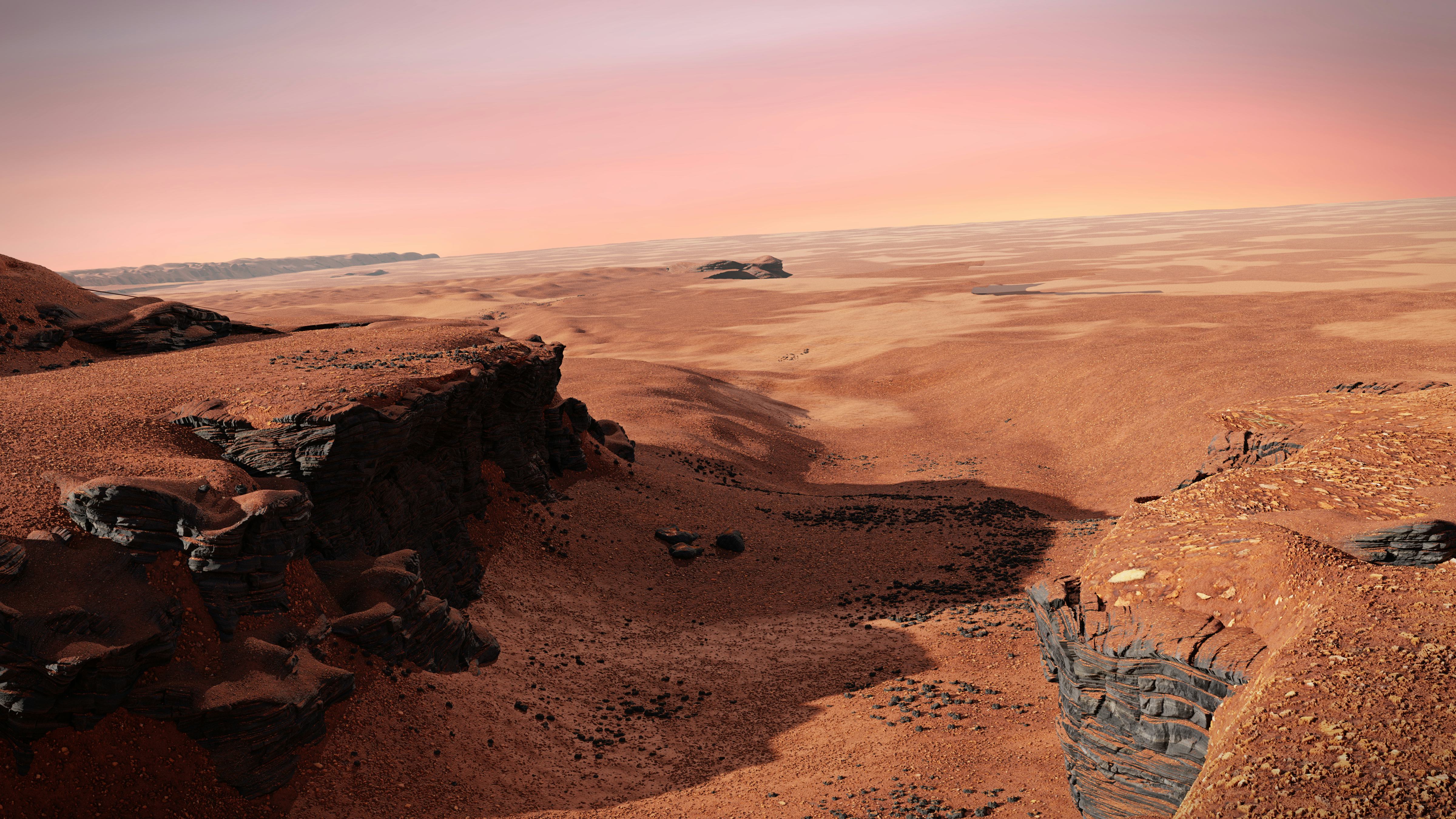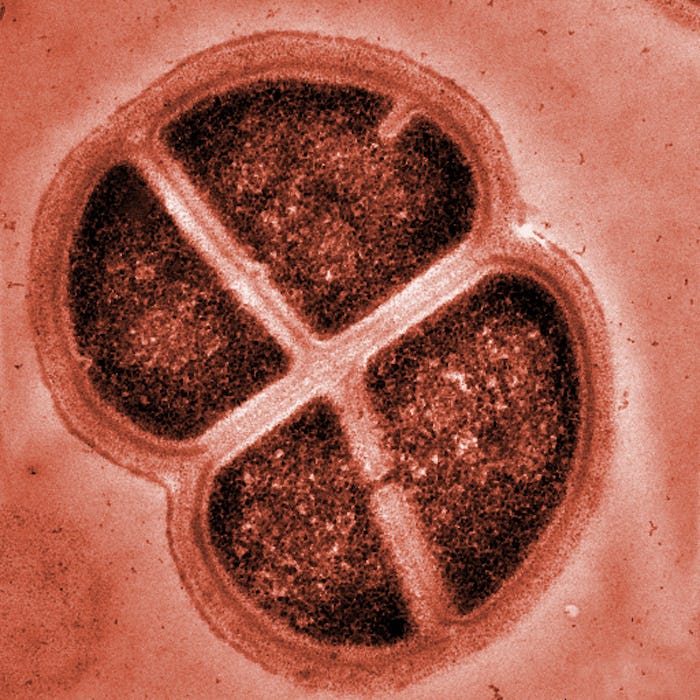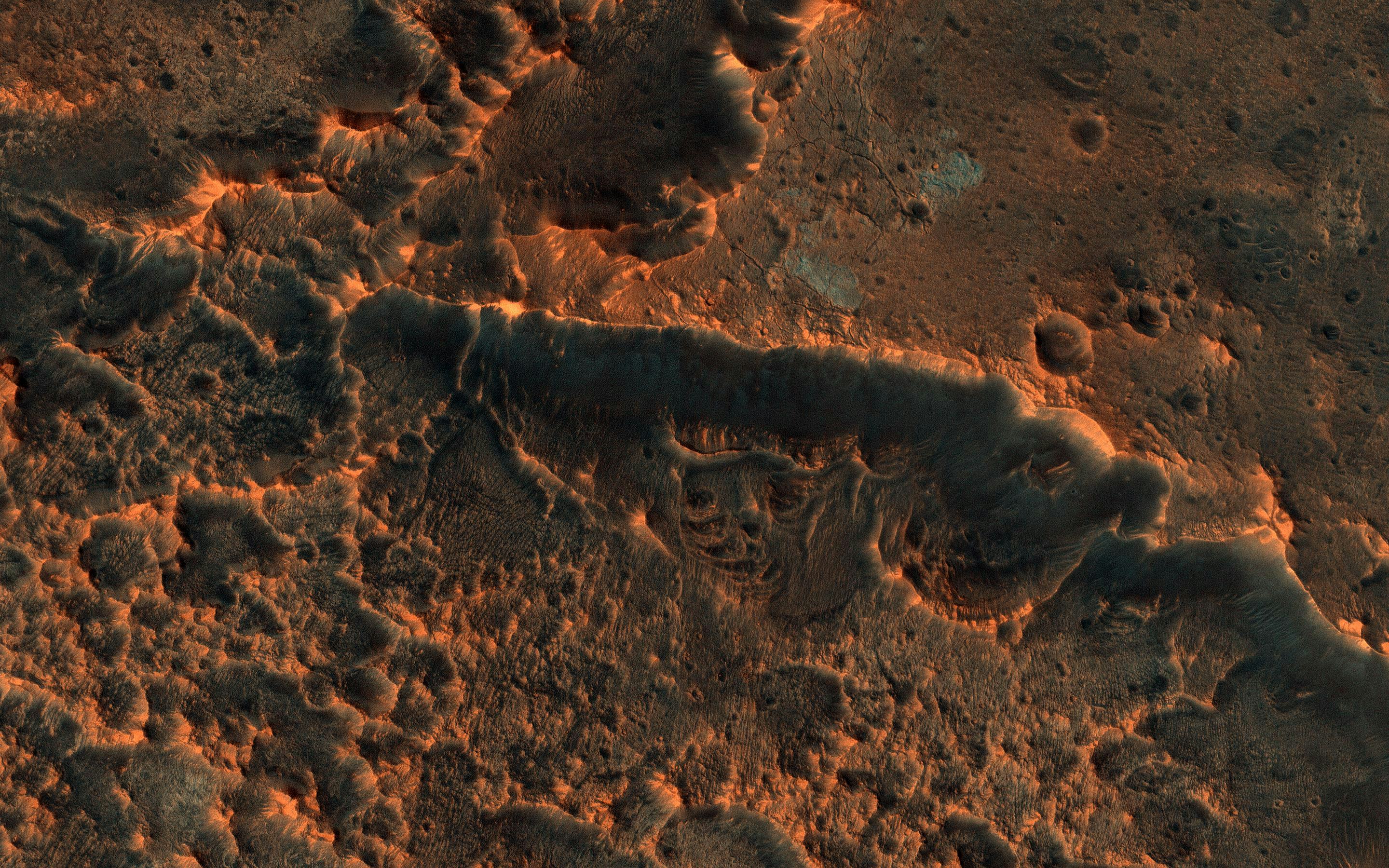
For something that looks almost familiar as a California desert at times, the Martian surface is remarkably inhospitable to Earthling life. The thin atmosphere would suck the water right out of terrestrial organisms. The lack of a magnetic field means anything living there would be bombarded by radiation. Even the hard-packed regolith is full of toxic chlorinated hydrocarbons known as perchlorates. It’s hard to imagine anything surviving there for long.
But about 280 million years? Enter Deinococcus radiodurans, or “Conan the Bacterium,” to its friends — an Earth-based microbe that could teach us a lot about ancient Mars. First found in 1956 when it ruined an attempt to break new ground in using gamma radiation to preserve canned meat, D. radiodurans is one of the most radiation-resistant organisms found on Earth.
New research on D. radiodurans published this week in Astrobiology indicates that while even it wouldn’t survive more than a few hours on the Martian surface, it might survive for upwards of a quarter of a billion years safely buried just ten meters below the surface.

WHAT’S NEW — Mike Daly, a professor of pathology at the Uniformed Services University, has been working with Deinococcus radiodurans for decades. D. radiodurans’ limits have been a mystery for much of this time. That’s because, Daly explained to Inverse, a 1996 team led by John Battista at Louisiana State discovered that when it’s dehydrated, “it can survive way, way more ionizing radiation.”
Too much, even; desiccated D. radiodurans was so resistant to ionizing radiation that “no one had the capacity — at their universities or otherwise — to give doses that were that high.” That’s part of how this study came about. “We decided that we would do the all-out effort, we would spend days and days in our irradiation center and determine once and for all the absolute limit of these bacteria when they are dried and frozen, which we did,” Daly explains. And that limit was 140,000 Grays – enough to kill a human 28,000 times over.
D. radiodurans gets its resilience from several mechanisms. The first unique element is, well, an element: manganese. Radiodurans incorporates manganese, a mineral that astrobiologists consider a principal biosignature on Mars, into its proteins, which Brian Hoffman, a bioinorganic chemist at Northwestern University, explains “are very highly radioprotective.” Speaking to Inverse, he notes that “the more manganese antioxidant there is in a cell, the more resistant to radioactivity it is.”
Daly adds that it provides “unbelievable resistance — well, not unbelievable, it is what it is! — extraordinary resistance to oxidation.”
The second feature that protects D. radiodurans from absorbing 280 million years of Martian radiation over the course of a week is the paper’s other big takeaway: the configuration of its genome. Daly explains that the genome of D. radiodurans contains “multiple copies, identical copies, and they are linked together.” This means that unlike us, radiodurans are “always ready for repair.”
Finally, while they may not thrive in it, D. radiodurans’ resistance to radiation increases as they dehydrate and freeze — a perfect match for Mars’ bitter cold and desert aridity.

WHY IT MATTERS — Two-hundred eighty million years is a long time. But it’s still just a small fraction of the time since the last liquid water flowed on Mars’ surface. If a population of D. radiodurans-like martian microbes existed, they would need some help making it to our day.
That’s where impact gardening comes in. Despite the name, it doesn’t actually have anything to do with tending to a colony of bacteria beneath the Martian crust. Impact gardening refers to meteorites impacting the surface, heating frozen water back to its liquid form and tossing regolith — and anything else that might be in there with it — into the atmosphere.
If it were lucky, a colony of D. radiodurans-like microbes might be able to survive for hundreds of millions of years between being unfrozen and rehydrated by random impacts, then go dormant for hundreds of millions more. If it were really lucky, this sort of mechanism means it might even be able to survive all the way to the present.
“The chance of viable life on Mars is low — not zero! — and how seriously [NASA] takes that is very admirable,” says Hoffman. “The chance is very low, but any chance … we cannot afford to guess wrong.”
That’s because the tremendous durability of D. radiodurans also raises serious problems for the issue known as forward contamination. Backwards contamination — what Daly and his team were originally concerned with — covers the popular sci-fi scenario of what might happen if alien life were brought to Earth. Forward contamination is the much more likely possibility that the opposite could happen.
If any contamination were to occur, even by extremely common bacteria like E. coli, the team writes in their report, “it must be assumed that any forward contamination of the Martian subsurface with terrestrial organisms would essentially be permanent.”
D. radiodurans might be one of the most radiation-resistant living organisms on Earth, but radiation resistance isn’t just for living organisms. “Viruses are much more radiation-resistant than their hosts,” says Daly, and “their viruses should survive even longer. If you go down that road, then their biomolecules–DNA and protein–their remnants should still be detectable.”
For Daly, this means that the upcoming generation of missions — the Rosalind Franklin rover, ExoMars, and the return of samples gathered by Perseverance — are extremely promising for finding traces of Martian life.







